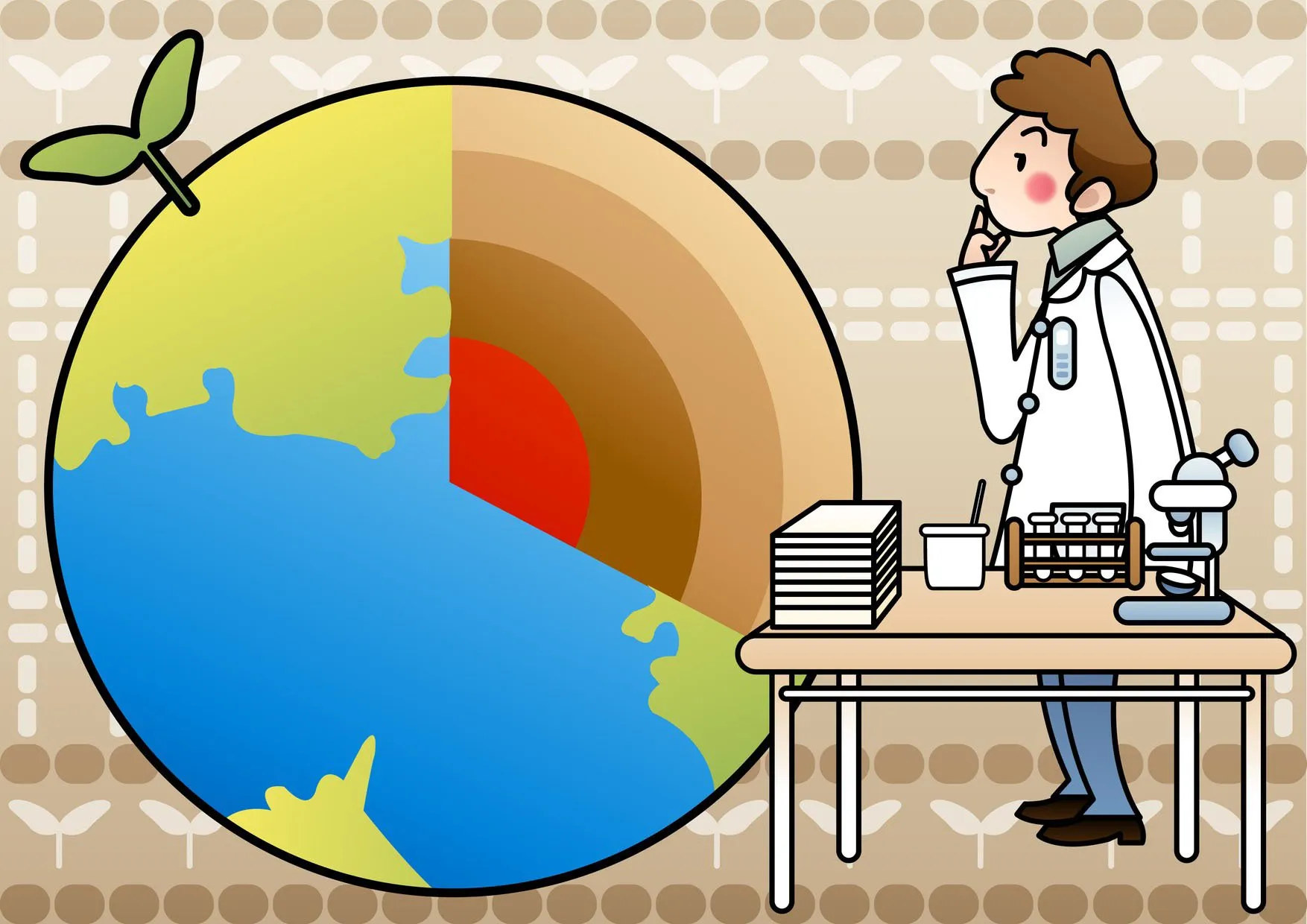An onion-like planet
Humanity has shown interest in understanding Earth’s composition since time immemorial. From ancient mythical fables, towards the flat-Earth view of old, from ancient Greek speculation to the implementation of science, geology, chemistry and the development of seismology we have struggled to develop a convincing, comprehensive theory of Earth’s formation.
The modern consensus is that Earth is much like an onion. Whilst the latter is ridiculously bigger, if one were to slice an onion open and slice the Earth with their star killer, titan sized knife, they would have much in common, both consisting of multiple layers.
For the purposes of this article, the focus will be the chemical division of Earth, consisting of the following distinct parts: The Crust, the Mantle, Earth’s Outer Core and Earth’s Inner Core. An alternative division is the mechanical one – or rheological, meaning the study of liquid states – which divides the Earth into the lithosphere, the asthenosphere, the mesospheric mantle, the outer core and the inner core.
The Layers
Billion years ago, during the early stages of Earth’s formation, denser substances sank deeper, in a process called planetary differentiation (see also, Iron Catastrophe), towards the center whereas those that were less dense migrated to the Crust. Because of this, lighter materials such as rock, basalts and granites compose the outermost layers whereas those deeper inside are made of heavier material, such as nickel and iron.
The largest differentiating factor between the layers is their varying melting points along with their intensity of pressure, with the inner core being solid, the outer core being liquid and the mantle being predominantly solid. As depth increases, so does temperature and pressure.

The Crust
The first, outermost layer of Earth, the Crust ranges from 5 to 70 kilometers in depth. It consists of two parts, the oceanic and the continental crust. The oceanic crust makes up the seafloor and is thinner, denser and simpler than the continental. On average, it is only about six kilometers thick, mainly made up of the igneous rock basalt. Essentially, it separates the Earth’s oceans from the hot mantle lying beneath them. The continental crust, while less dense than the oceanic crust, is considerably thicker: From 35 to 40 kilometers. Around 40% of Earth’s surface is underlain by its granitic, sedimentary and metamorphic rocks.
The Mantle
The second layer of the Earth, the Mantle can be further divided into three distinct parts, the upper and the lower and their transition zone. It extends to a depth of approximately 2.900 kilometers, made of thick, solid, rocky substance representing the vast majority of the total weight and mass of the planet, thus making it the thickest layer of Earth. The top of the mantle is defined by a sudden increase in seismic velocity, now known as Mohorovicic Disconinuity. Even though the uppermost part of the mantle is extremely hot, its behavior is still “rocky” enough. The transition zone between upper and lower mantle, between a depth of 250 to 400 miles, is an area of great complexity. The lower mantle, even hotter than the upper, is much less understood than what lies above it. It extends all the way to core-mantle boundary, known as the Gutenberg discontinuity at about 2.890 kilometers below the Earth’s surface. The heat in this extreme depth rages at 4.000 degrees Celsius, but due to the equally extreme pressure forces, very little of the rock is liquid.
The Outer Core
The Outer Core is the third layer of the Earth, a magma-like liquid layer composed of iron and nickel, along with small amounts of other substances. Around 2.200 kilometers thick, it is the second largest layer of Earth. It is responsible for Earth’s Magnetic Field that acts as an invisible barrier protecting Earth from various harmful particles fired out by the Sun. As Earth spins on its axis, the iron inside the liquid outer core undergoes turbulent convection, rotating faster than the rest of the planet and causes powerful electric currents to develop in the liquid iron itself. These currents create lines of force stretching around the Earth and thousands of miles into space, resulting in the planet’s magnetic field.
The average magnetic field strength in Earth’s outer core is estimated to be 25 Gauss, which is 50 times the strength of the magnetic field measured on Earth’s surface.
The Inner Core
The fourth and final layer inside the Earth, the Inner Core is mainly made of iron. Despite temperature reaching extraordinary levels – even higher than 5.000 Celsius – the Inner Core is solid, unlike the liquid Outer Core. This is due to the unimaginable pressure inflicted on it by the weight of the previous three Earth’s layers above it, the Crust, the Mantle and the Outer Core. Without this immense pressure, the temperature of this layer would have easily melted the iron to liquid form. Notably, with every passing year, the inner core grows by about a millimeter as parts of the outer core solidify, slowly freezing. At the same time, as was relatively recently discovered, there are regions of the inner core that are actually melting. The end result is that there is still freezing of outer core material, and it is still growing over time, but it is by no means a uniform process.
Conclusion
We have by no means conquered nature, nor fully grasped all its yet untold mysteries and secrets. As one delves deeper into the Earth’s core, our knowledge grows thin. This article barely scratches the surface, as many fundamental issues and dominant mechanisms of the inner workings of our planet remain unresolved. This is not to be taken as a downplay of our progress so far though.
Humanity has gone a long way in unveiling what lies below back from the days of the flat-Earth view, when religious fables and mythical stories were the norm in explaining how our world works. Slowly yet surely and inexorably, we are in an ongoing process of fully understanding our planetary onion.

